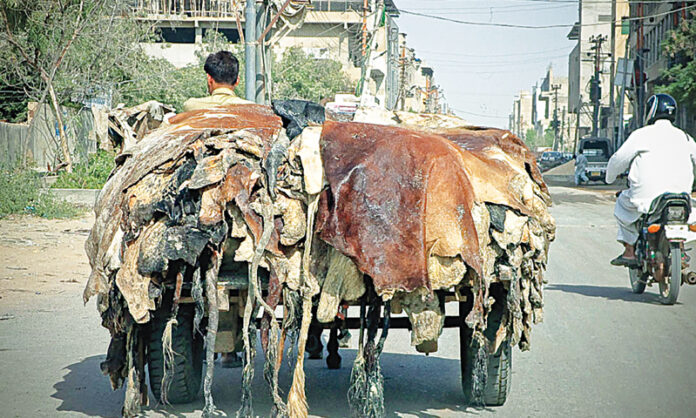LAHORE: The tanners’ sector has reported that the business of sacrificial animals and their hides during the recent Eid-ul-Adha amounted to over RS 381 billion, contributing to an overall economic activity of around RS 500 billion in the country.
Speaking to Profit, Agha Syedain, former chairman of the Tanners Association of Pakistan and an expert in the leather sector, revealed that approximately six million or more animals were sacrificed during Eid-ul-Adha, with an estimated value of RS 376 billion.
“However, the sale of hides fetched around 5 billion rupees, resulting in a total business volume of approximately RS 381 billion from the buying and selling of animals and their hides. It’s worth noting that the number of sacrificial animals was around 30% lower compared to the previous year,” he said.
According to Agha Syedain, around two million cows were sold nationwide during Eid ul-Adha. Considering an average value of RS 100,000 per cow, the business from selling cows alone amounted to approximately RS 200 billion. Similarly, the average price of cow hides in various leather markets this year was around RS 2,000, resulting in a business of approximately RS 4 billion from cow hides.
“In addition to cows, approximately 3.5 million goats were sold this year. With an average price of RS 40,000 per goat, the business of selling goats alone amounted to around RS 140 billion. The goat hides were priced at up to RS 275, leading to a business volume of approximately RS 1 billion from goat hides,” he added.
Agha Syedain also stated that about 1.8 million sheep were sold during the festive season, with an average price of RS 30,000 per sheep. The business from selling sheep alone amounted to around RS 24 billion.
“Moreover, sheep hides were sold for approximately RS 50 per hide, resulting in a business volume of approximately RS 400 million from sheep hides. The sacrificial of camels was also observed during Eid-ul-Adha, with an estimated 60,000 camels sacrificed across the country. Calculating an average price of RS 200,000 per camel, the business of selling camels amounted to RS 12 billion. The camel hides were priced at around RS 250 per hide, contributing approximately RS 15 crore to the business from camel hides,” he claimed.
Agha Syedain referred to data released by the National Food Security and Research, stating that out of a total population of 212.60 million, approximately 81.519 million animals are slaughtered annually, accounting for 40.23% of the population.
He also explained that due to the international depression in the previous year, the prices of raw materials, including hides, have decreased, leading to lower selling prices this year.
“Furthermore, it is estimated that approximately 25% of the hides, worth around RS 1.75 billion, will be wasted due to hot weather and load shedding,” he said.
Agha Syedain highlighted that apart from animal hides, even the intestines obtained from animals are sold, serving as raw material for various industries. This generates an approximate amount of RS 1.5 billion.
“The annual number of slaughtered animals, around 81.519 million, indicates that during Eid ul-Adha, approximately 6.30 million animals are sacrificed, accounting for about 7.80% of the total sacrificial animals and 3% of the overall animal population,” he explained.
According to him, the tanners’ sector plays a crucial role in the economy of Pakistan, and the significant business volume generated from the buying and selling of sacrificial animals and their hides during Eid-ul-Adha demonstrates the sector’s importance and its contribution to the national economy.























